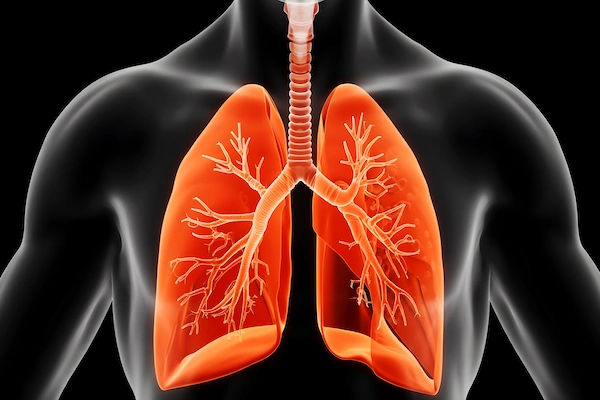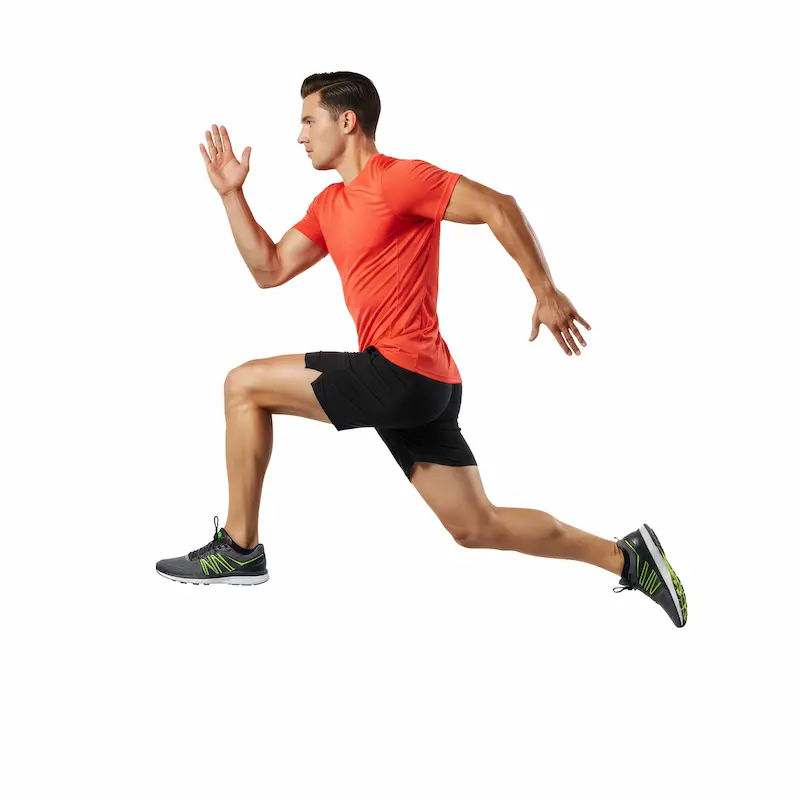Robotic Bariatric Surgery: A Comprehensive Guide to Precision Weight Loss
Discover the benefits, procedure details, and recovery of robotic bariatric surgery. Learn how precision, safety, and minimally invasive techniques support effective weight loss.

Written by Dr. J T Hema Pratima
Reviewed by Dr. Rohinipriyanka Pondugula MBBS
Last updated on 8th Oct, 2025
_0.webp?tr=q-80,f-webp,w-350,dpr-2,c-at_max 700w)
Introduction
Deciding to undergo weight loss surgery is a significant, life-changing step. Today, technological advancements have transformed this journey, offering new levels of safety and precision. Robotic bariatric surgery is at the forefront of this revolution, providing a minimally invasive option for individuals seeking a sustainable solution for obesity. But what exactly does it entail, and how does it differ from traditional laparoscopic methods? This guide demystifies robotic surgery for weight loss, breaking down the science, benefits, and procedure details in an easy-to-understand manner. We will explore how this advanced approach can lead to better outcomes, a smoother recovery, and a safer path to achieving your health goals. Whether you are just beginning your research or are close to making a decision, understanding the role of robotics in bariatric surgery is crucial for making an informed choice about your care.
What is Robotic Bariatric Surgery?
Robotic bariatric surgery is an advanced form of minimally invasive surgery where the surgeon performs the procedure using a sophisticated robotic system. It's essential to clarify a common misconception: the robot does not operate on its own. Instead, it is a powerful tool that translates the surgeon’s hand movements into smaller, more precise actions inside your body.
Beyond Laparoscopy: The Da Vinci Surgical System
The most common system used is the da Vinci surgical system. Think of it as an enhancement of standard laparoscopy. In traditional laparoscopy, surgeons use long, rigid instruments while looking at a 2D screen. The robotic system overcomes these limitations by providing a high-definition, magnified 3D view of the surgical site and instruments that can bend and rotate with a greater range of motion than the human wrist.
The Surgeon is Still in Command: How the Technology Works
During the procedure, the surgeon sits at a console a few feet away from you. They look into a viewer that provides a crystal-clear, 3D image of your anatomy. As the surgeon moves their hands and wrists, the robotic arms mimic these movements with precision, filtering out any tremors. This setup allows for extraordinary control, especially when working in tight spaces within the abdomen. This level of control is a significant benefit of robotic-assisted surgery for complex procedures like gastric bypass.
Consult a Bariatric Surgeon for the best advice
Robotic vs. Laparoscopic Bariatric Surgery: Key Differences
While both are minimally invasive, the differences between robotic and laparoscopic surgery are substantial and can impact your surgical outcome.
Enhanced 3D Vision and Magnification
The most immediate difference is the visual field. Laparoscopy provides a 2D image on a flat screen, which can lack depth perception. The robotic system’s 3D, high-definition vision gives surgeons a depth of field similar to what they would have in an open surgery, but magnified up to 10 times. This allows for identifying tiny blood vessels and nerve structures with incredible accuracy, which is crucial during a bariatric procedure.
Wristed Instruments: Mimicking the Human Hand
Laparoscopic instruments are straight and rigid, limiting movement to four directions. Robotic instruments are “wristed,” meaning they can rotate and bend far beyond the capabilities of a human hand or standard tools. This dexterity is invaluable when performing delicate tasks like suturing and dissection, potentially leading to a more precise reconstruction of the digestive tract.
Comparing Recovery Times and Scarring
Both approaches offer faster recovery than open surgery. However, due to the enhanced precision and smaller, more controlled movements, patients undergoing robotic bariatric surgery may experience less tissue trauma. This can translate to marginally less post-operative pain, reduced blood loss, and in some cases, a slightly shorter hospital stay. The scarring is identical—a few small incisions—as the access points are the same size.
Top Benefits of Choosing a Robotic Approach
The advantages of opting for a robotic system extend beyond the technical specs, directly benefiting the patient.
Unmatched Precision and Control
The combination of 3D vision and wristed instrumentation provides surgeons with superior control. This precision is particularly beneficial in complex anatomies or for patients who have had previous abdominal surgeries, where scar tissue may be present.
Potential for Reduced Pain and Blood Loss
Greater precision means less unnecessary handling and trauma to surrounding tissues and organs. Studies have shown that robotic procedures can be associated with lower estimated blood loss and reduced post-operative pain, which can lead to a more comfortable recovery period.
Lower Risk of Complications
The enhanced visualisation and control may contribute to a lower rate of complications, such as leaks from the surgical connections (anastomoses) or unintended injuries to nearby structures. A 2019 study published in Surgical Endoscopy found that robotic Roux-en-Y gastric bypass was associated with a significantly lower rate of complications compared to the laparoscopic approach. If you have concerns about surgical risks, it's important to discuss them with a qualified specialist. You can consult a bariatric surgeon online with Apollo24|7 to understand your personal risk profile.
Types of Bariatric Procedures Performed Robotically
Virtually all common weight loss surgeries can be performed using robotic assistance.
Robotic Sleeve Gastrectomy
This is the most frequently performed bariatric surgery. The robot assists in the precise removal of approximately 80% of the stomach, creating a slim "sleeve." The precision offered by the robot can lead to a more uniform sleeve and secure stapling lines.
Robotic Gastric Bypass (Roux-en-Y)
This is a more complex procedure that involves creating a small stomach pouch and rerouting the small intestine. The robotic system excels here, as the wristed instruments make the intricate suturing required for the bypass much easier and more accurate.
Robotic Revision Bariatric Surgery
For patients who have had a previous weight loss surgery that needs adjustment or correction, revision surgery is notoriously challenging due to scar tissue. The robotic approach is often the preferred method in these cases, as the enhanced visualisation and dexterity allow surgeons to navigate scarred anatomy more safely.
Are You a Candidate for Robotic Weight Loss Surgery?
Candidacy for robotic bariatric surgery is generally the same as for any bariatric procedure. The primary deciding factor is not the tool, but the patient's health status. Typical criteria include:
- A body mass index (BMI) of 40 or higher, or a BMI of 35-39.9 with serious obesity-related health conditions like type 2 diabetes, hypertension, or sleep apnoea.
- A history of unsuccessful attempts at weight loss through diet and exercise.
- A commitment to lifelong lifestyle changes, including diet and exercise.
- Being psychologically prepared for the surgery and its aftermath.
Determining your candidacy involves a thorough evaluation. Apollo24|7 offers convenient home collection for pre-surgical tests like HbA1c and lipid profiles, which are often required during the assessment process.
What to Expect: The Robotic Bariatric Surgery Journey
Pre-operative Preparation and Testing
This phase involves nutritional counseling, psychological evaluation, and various medical tests to ensure you are fit for surgery. You will also meet with your surgeon to discuss the robotic technique in detail.
The Day of Your Surgery
You will be placed under general anaesthesia. The surgical team will position the robotic system and make a few small incisions for the camera and instruments. The surgeon will then perform the entire procedure from the console.
Recovery in the Hospital and at Home
Most patients stay in the hospital for 1-2 days. You will start with a liquid diet and be encouraged to walk soon after surgery to aid recovery. At home, you will follow a strict dietary regimen and gradually increase physical activity. Follow-up appointments are critical for long-term success.
Addressing Common Concerns and Risks
While safer than open surgery, robotic bariatric surgery carries standard surgical risks, including infection, bleeding, and blood clots. Specific risks related to the procedure include leaks from the staple lines, vitamin deficiencies, and dumping syndrome. It's important to note that the robotic system does not eliminate these risks, but its precision may help mitigate them. Discuss all potential risks thoroughly with your surgeon.
Life After Robotic Bariatric Surgery: Long-Term Success
The surgery is a powerful tool, but long-term success depends on your commitment. This includes adhering to a nutrient-rich diet, taking prescribed vitamin and mineral supplements for life, engaging in regular physical activity, and attending support groups or follow-up appointments. The robotic weight loss surgery provides the physical change, but the mental and behavioral changes are what ensure lasting health.
Conclusion
Robotic bariatric surgery represents a significant leap forward in the surgical treatment of obesity. Its benefits—enhanced precision, potentially faster recovery, and reduced risk of complications—make it an attractive option for many patients. However, the most important factor remains the skill and experience of your surgical team. The robot is a tool, and its effectiveness depends on the surgeon wielding it. When choosing a path forward, have an open conversation with a qualified bariatric surgeon about all available options, including the robotic approach. By making an informed decision, you can embark on your weight loss journey with confidence, equipped with the best that modern medicine has to offer.
Consult a Bariatric Surgeon for the best advice
Consult a Bariatric Surgeon for the best advice

Dr. Sunil Kaul
General Surgeon
30 Years • MBBS, MS, FICS, FIMSA, FMAS
Delhi
Apollo Hospitals Indraprastha, Delhi
(25+ Patients)

Dr. Amrutha G
General Physician/ Internal Medicine Specialist
10 Years • MBBS,DNB(family medicine), Diabetologist-CCEBDM,CCGDM
Bengaluru
Apollo Clinic, Sarjapur Road, Bengaluru

Dr. Anand Ravi
General Physician
2 Years • MBBS
Bengaluru
PRESTIGE SHANTHINIKETAN - SOCIETY CLINIC, Bengaluru

Prof Dr Pawanindra Lal
Minimal Access/Surgical Gastroenterology
31 Years • MS, DNB, FCLS, FRCS(Ed,Glasg,Eng,Irel), FACS, FAMS, FFSTEd
Delhi
Apollo Hospitals Indraprastha, Delhi
(100+ Patients)

Dr. Aparna Bhasker
Bariatrician
18 Years • MBBS MS
Mumbai
Apollo Hospitals CBD Belapur, Mumbai
Consult a Bariatric Surgeon for the best advice

Dr. Sunil Kaul
General Surgeon
30 Years • MBBS, MS, FICS, FIMSA, FMAS
Delhi
Apollo Hospitals Indraprastha, Delhi
(25+ Patients)

Dr. Amrutha G
General Physician/ Internal Medicine Specialist
10 Years • MBBS,DNB(family medicine), Diabetologist-CCEBDM,CCGDM
Bengaluru
Apollo Clinic, Sarjapur Road, Bengaluru

Dr. Anand Ravi
General Physician
2 Years • MBBS
Bengaluru
PRESTIGE SHANTHINIKETAN - SOCIETY CLINIC, Bengaluru

Prof Dr Pawanindra Lal
Minimal Access/Surgical Gastroenterology
31 Years • MS, DNB, FCLS, FRCS(Ed,Glasg,Eng,Irel), FACS, FAMS, FFSTEd
Delhi
Apollo Hospitals Indraprastha, Delhi
(100+ Patients)

Dr. Aparna Bhasker
Bariatrician
18 Years • MBBS MS
Mumbai
Apollo Hospitals CBD Belapur, Mumbai
More articles from Weight Loss
Frequently Asked Questions
Is robotic bariatric surgery more expensive?
Yes, the procedure can be slightly more expensive due to the cost of the robotic system and its maintenance. However, many insurance companies cover robotic bariatric surgery similarly to laparoscopic surgery if the same criteria are met. It's essential to check with your provider.
How long does the robotic surgery itself take?
The operating time is generally comparable to or slightly longer than laparoscopic surgery, especially as the surgeon sets up the system. However, this time is often offset by the efficiency and precision gained during the critical steps of the procedure.
What is the success rate of robotic bariatric surgery?
Success, measured by excess weight loss and resolution of co-morbidities, is very high and is comparable to or may exceed laparoscopic results. Studies show patients can lose 60-80% of their excess weight within the first year, with high rates of improvement in conditions like diabetes.
Will I have more scars with a robotic procedure?
No. The incisions made for robotic surgery are the same size and number as those for laparoscopic surgery—typically 5-6 small incisions, each less than an inch long.
Can any surgeon perform robotic bariatric surgery?
No. Surgeons require specific, extensive training and certification on the robotic system before they can perform these procedures independently. It's crucial to choose a surgeon who has significant experience in both bariatric surgery and robotic techniques.




